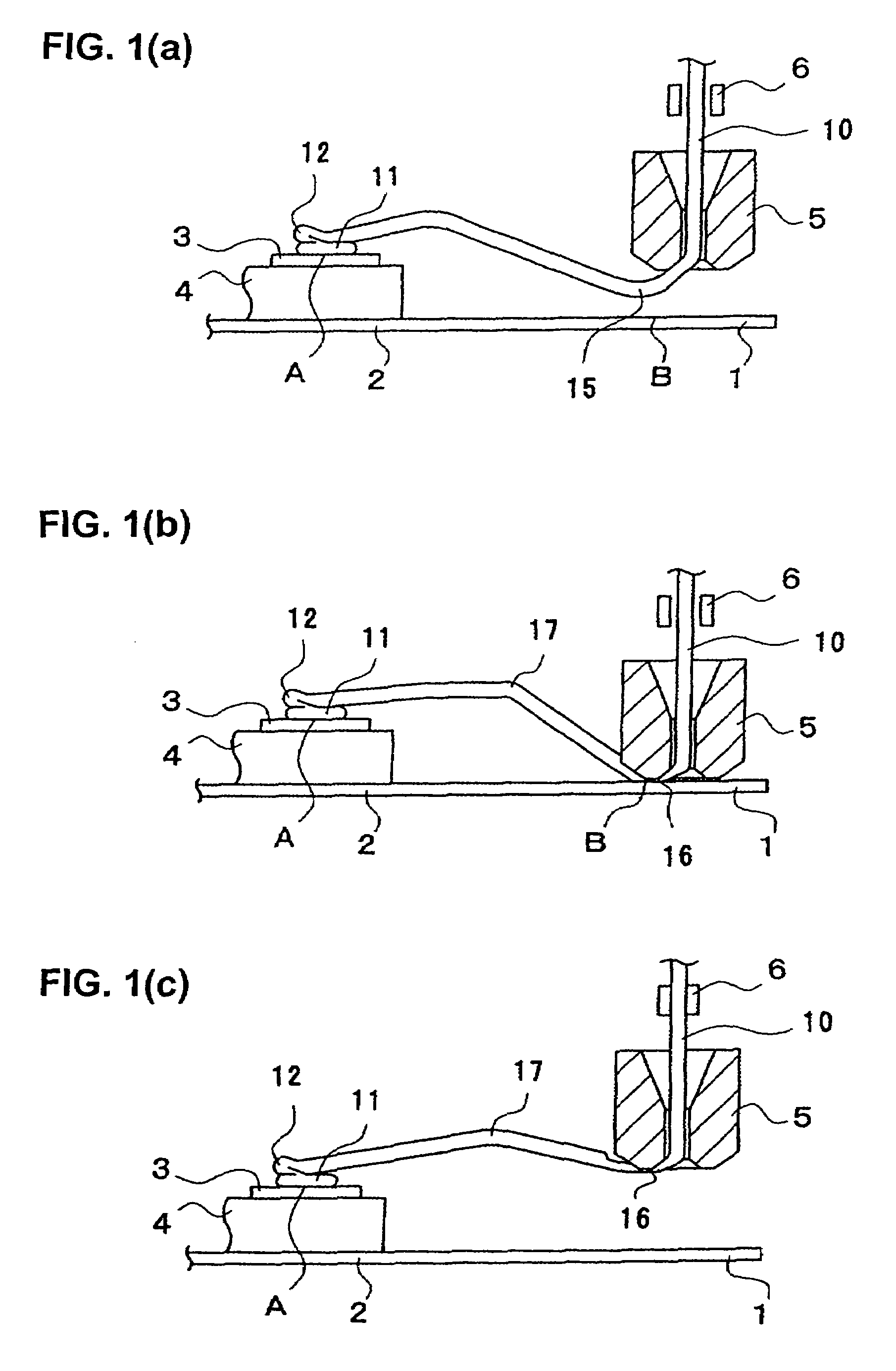Wire bonding method
a wire and wire technology, applied in the direction of soldering apparatus, manufacturing tools,auxillary welding devices, etc., can solve the problems of swelling and deterioration of achieve the effect of preventing swelling and improving the straightness of the wire loop
- Summary
- Abstract
- Description
- Claims
- Application Information
AI Technical Summary
Benefits of technology
Problems solved by technology
Method used
Image
Examples
Embodiment Construction
[0032]A first embodiment of the wire bonding method of the present invention will be described with reference to FIGS. 1(a) through 3(b).
[0033]On a lead frame 2 on which an external lead 1 is formed, a die 4 having thereon an electrode pad 3 is formed is mounted. As seen from FIG. 3(b), a wire 10 passes through a capillary 5. The reference numeral 6 indicates a clamper which makes the same horizontal and vertical motions as the capillary 5 whenever the capillary 5 is moved horizontally and vertically.
[0034]First of all, bonding is performed at the first bonding point A (first bonding) shown in FIG. 1(a), thus forming a pressure-bonded ball 11 and, on the pressure-bonded ball 11, a wire bonding part 12. The forming of this pressure-bonded ball 11 and wire bonding part 12 is effected by the method of, for instance, Japanese Patent Application Laid-Open Disclosure (1997) No. 9-51011. For more information on low height loop at the first bonding point, see JF'51011 which is incorporated ...
PUM
| Property | Measurement | Unit |
|---|---|---|
| pressure | aaaaa | aaaaa |
| height | aaaaa | aaaaa |
| swelling | aaaaa | aaaaa |
Abstract
Description
Claims
Application Information
 Login to View More
Login to View More - R&D
- Intellectual Property
- Life Sciences
- Materials
- Tech Scout
- Unparalleled Data Quality
- Higher Quality Content
- 60% Fewer Hallucinations
Browse by: Latest US Patents, China's latest patents, Technical Efficacy Thesaurus, Application Domain, Technology Topic, Popular Technical Reports.
© 2025 PatSnap. All rights reserved.Legal|Privacy policy|Modern Slavery Act Transparency Statement|Sitemap|About US| Contact US: help@patsnap.com



